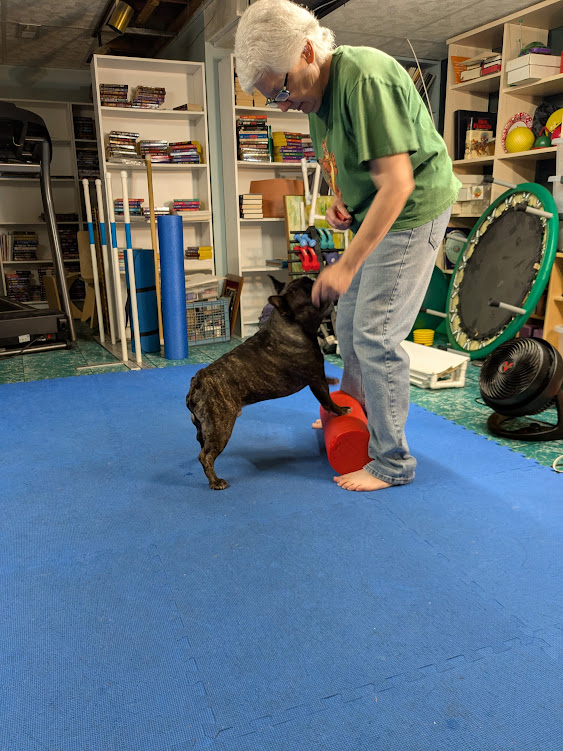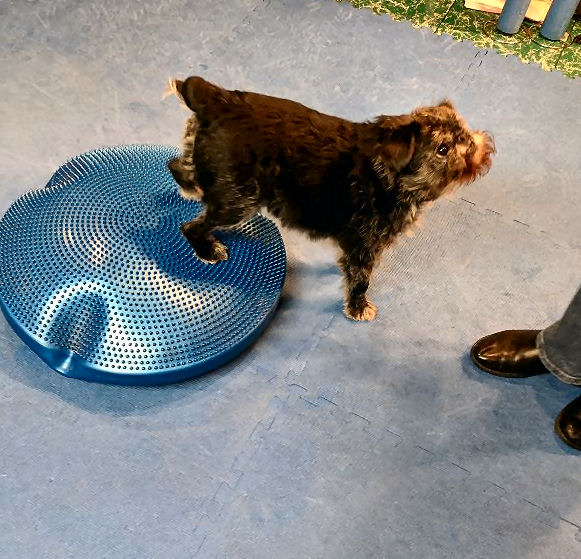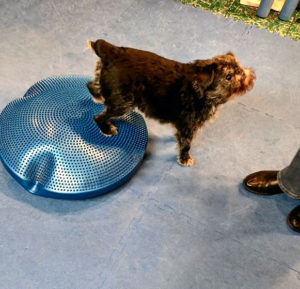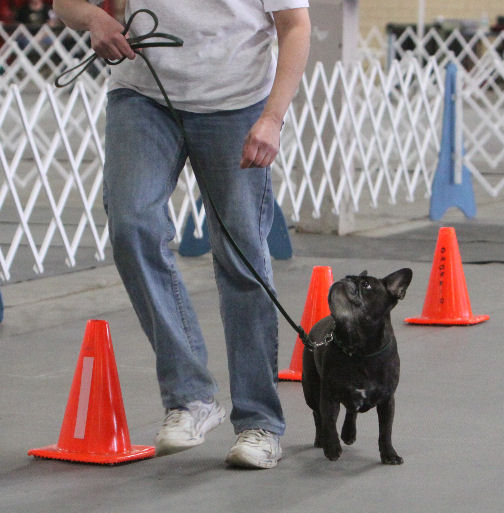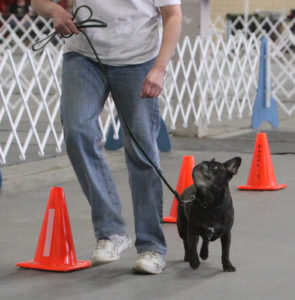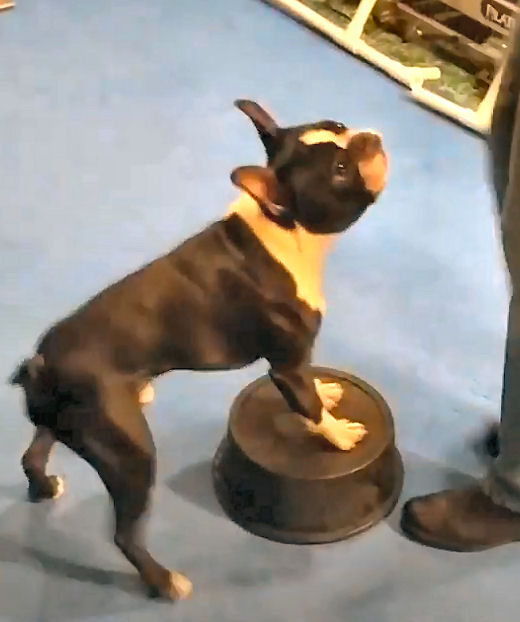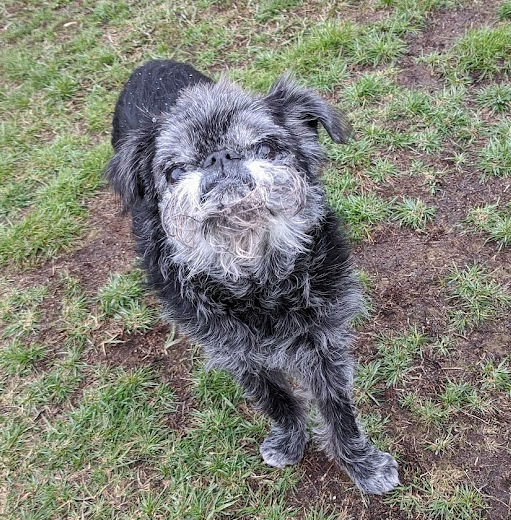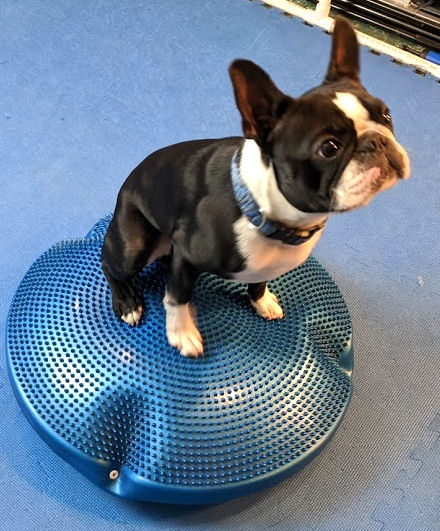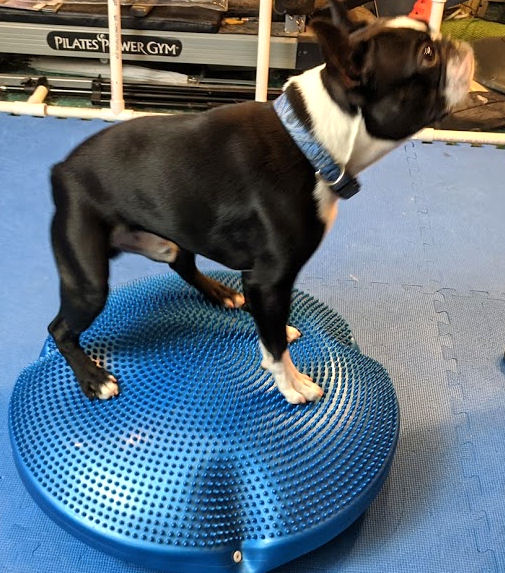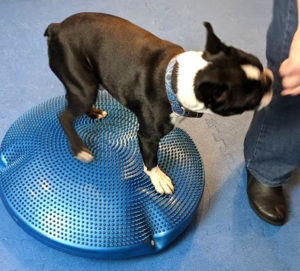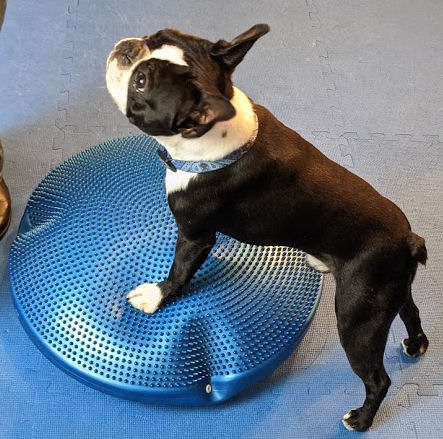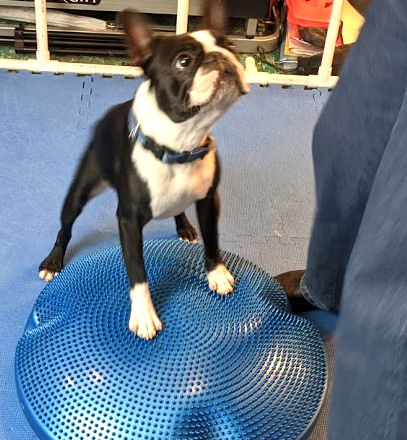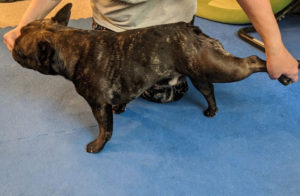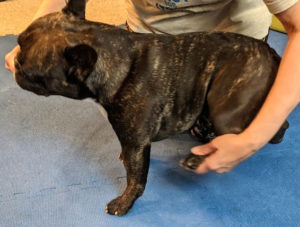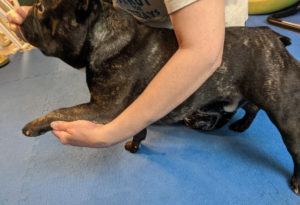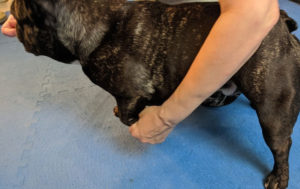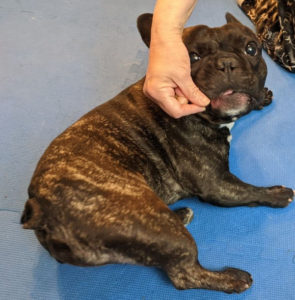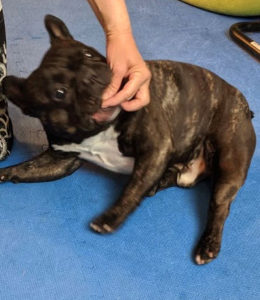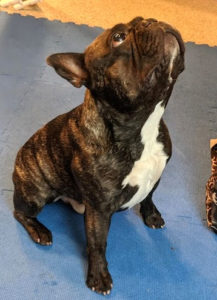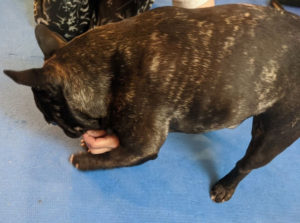Sometimes we invent training games for dog sports, like Obedience or Rally. Some games are just for fun. Others, like “On and Off” are for keeping our dogs healthy, fit, and moving.
Hope’s French Bulldog Torque is now 10 years old. He’s been showing some instability in his back legs. Many Frenchie people have commented about it on our videos, asking if he has IVDD (Intervertebral Disc Disease), which is fairly common in French Bulldogs. It’s not that. Instead, Torque’s hips are the problem.
Torque has always been front-heavy. It’s just the way Frenchies, and all broad-chested dogs, are built. To compensate, especially because we play dog sports, Hope has taught her dog hind-end awareness. He knows how to back up and plays “Paws & Boots” regularly.
Losing ground
A few months ago, Torque began slipping going up a flight of stairs. We figured he’d strained something, so didn’t think too much about it. Until it became months of carrying a 30 lb. dog up and down, multiple times each day. So the wheels started to turn. What could we do to help him regain his thigh muscle tone and strength? The “On and Off” game was born.
We use a foam roller for this game. Hold it steady between your feet. Because it’s foam, it’s a slightly unstable surface and requires the dog to engage their core during the game. A strong core is important to keeping your dog fit and healthy, just as it benefits people.
Like any exercise focusing on a particular muscle group, aim for a gradual increase in the number of repetitions. If your dog has weakness in their hind end, or is older, don’t overdo it, especially at first. Just like people, dogs can get sore if they start to use any muscle that’s been unused in a while.
Just like it sounds
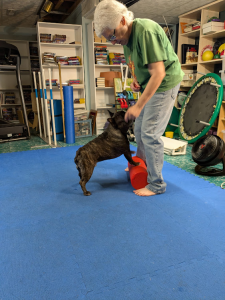
Holding the roller between your feet, invite your dog to put their front paws on top. Reward for success. If your dog doesn’t know “Paws Up!” or a similar command, you can lure this behavior at the start. Just hold the treat slightly above the dog’s nose and move it up and toward you. The dog should follow the movement of the treat. When the dog’s two front paws are on the roller, give the dog the treat and name the behavior. We call it “On!” but you can certainly use “Paws Up!” as you might for the Paws And Boots training game.
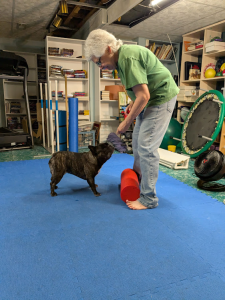
Have you taught your dog a release word? If so, you can use that to let your dog know it’s time to step off the roller. Or you can use “Off!” It’s a natural extension of the “Off!” game you taught your dog to stop them jumping on people.
Just a bit more
Repeat the “On and Off” a few times. Aim for five or so repetitions at first. If you’re trying to build up your dog’s hind end strength, try to add one or two repetitions each time you play. A couple times a week should be sufficient.
After less than a month of playing “On and Off,” we’re pleased to report that Torque is more confident going up stairs now. He’s only doing a couple at a time, but it’s better than none. Especially if you have small dogs, a full flight of stairs may be the equivalent of a three-story building to a person. Reward for any progress and each step forward.

